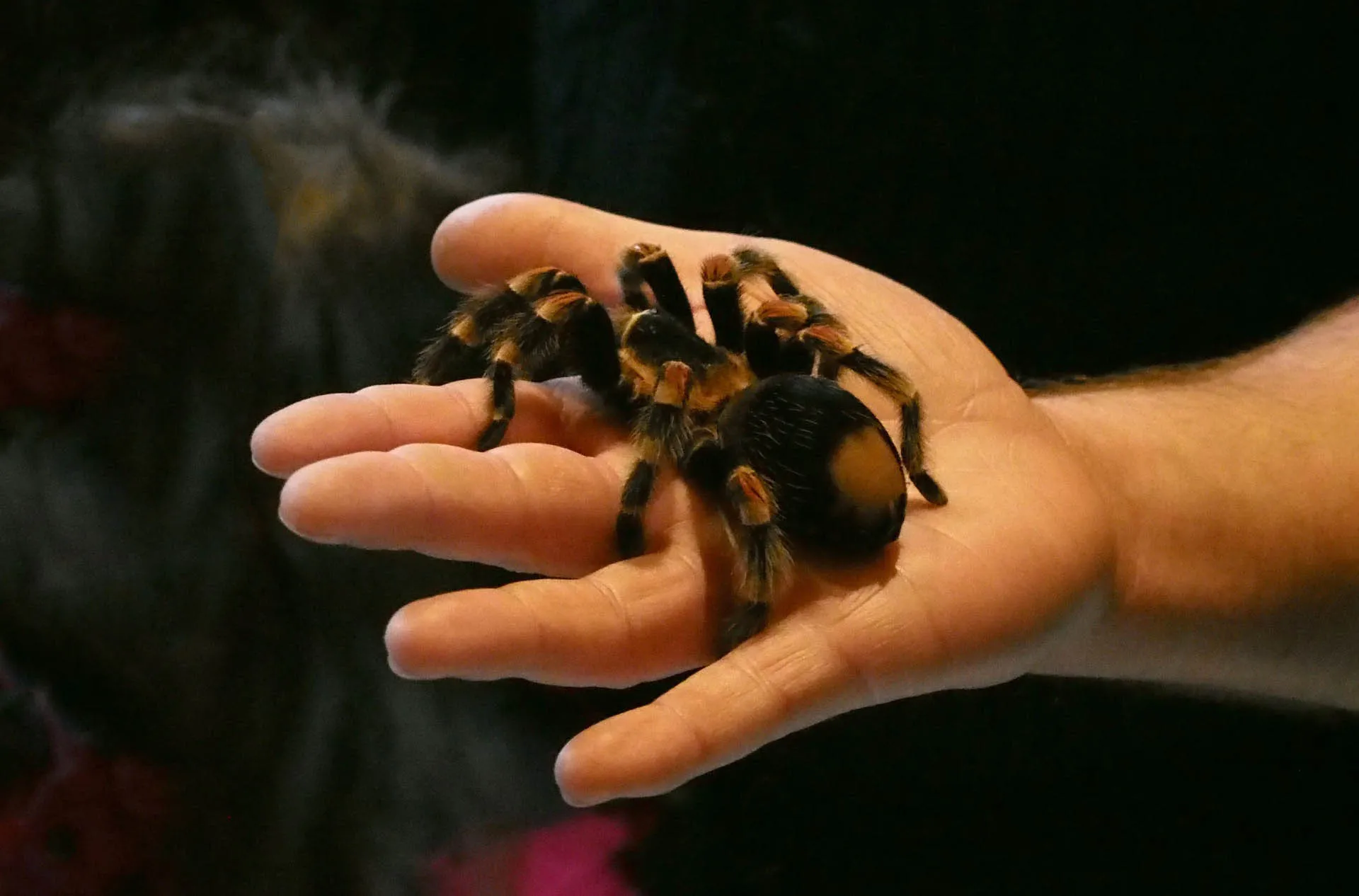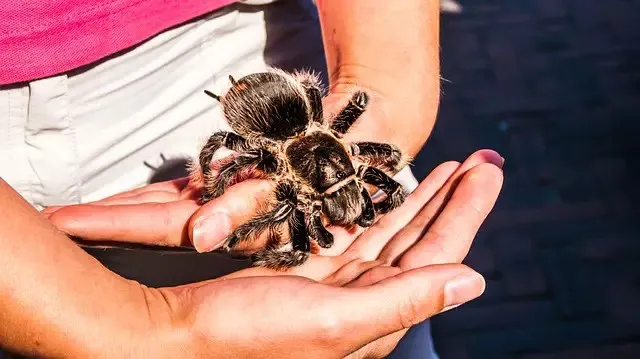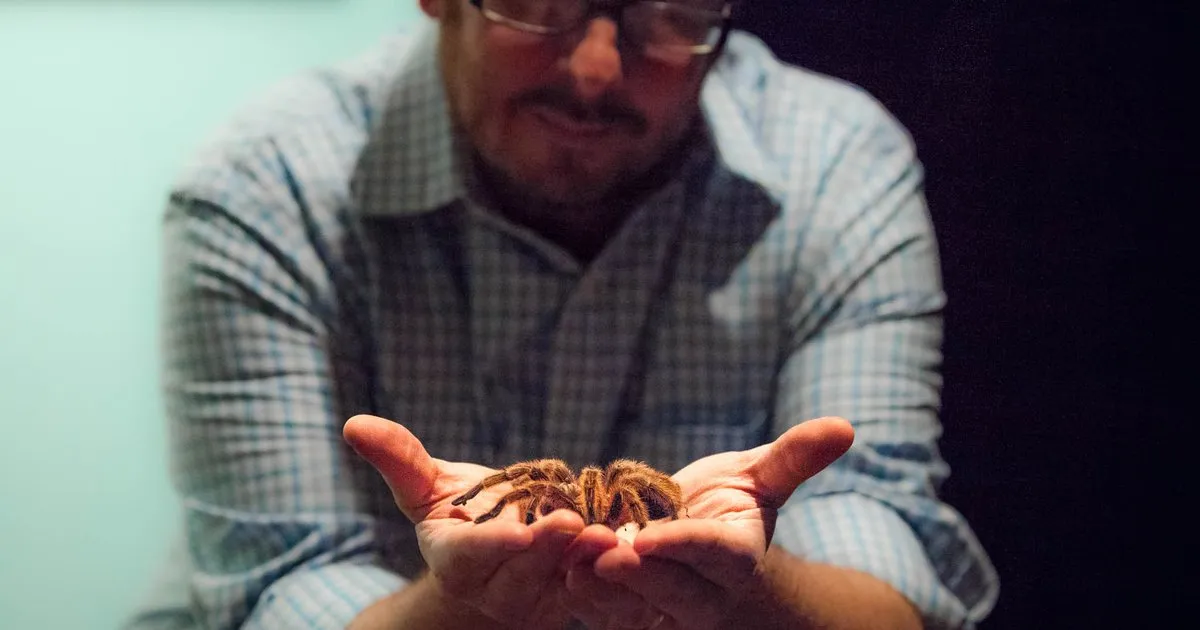Understanding Tarantulas and Their Behavior
Before considering whether you can hold a tarantula, it’s crucial to understand these fascinating creatures. Tarantulas, despite their intimidating appearance, are generally not aggressive. Their behavior is primarily driven by instinct, and their reactions depend heavily on their environment and perceived threats. Understanding this behavior is the first step in determining whether handling is a safe option for both you and the tarantula. Being aware of their natural tendencies will help you approach them with respect and make informed decisions about interaction.
Tarantula Species and Temperament
Different tarantula species exhibit varying temperaments. Some are known to be more docile, while others are more defensive and prone to flicking urticating hairs or biting. For example, the Chilean Rose Hair tarantula is often considered a good beginner species due to its relatively calm nature. Conversely, certain Old World species, such as the Indian Ornamental, are known for being more skittish and aggressive. Researching the specific species you own or are considering interacting with is essential for anticipating its behavior and assessing the risks involved in handling.
Factors Influencing Tarantula Temperament

Several factors can influence a tarantula’s temperament. These include their age, sex, and the conditions of their enclosure. Younger tarantulas are often more flighty than adults. Similarly, females tend to be more docile than males, especially during mating season. The environment also plays a crucial role. A stressed or poorly housed tarantula is more likely to be defensive. Providing a comfortable, secure enclosure with appropriate temperature, humidity, and hiding places minimizes stress and promotes a calmer disposition.
Preparing to Handle a Tarantula
If, after careful consideration, you decide to attempt handling, proper preparation is vital. This includes having the right equipment and understanding the environmental factors that can influence the tarantula’s behavior. Never rush the process, and always prioritize the tarantula’s well-being. Handling should never be forced; it should be a decision made based on a clear understanding of the risks and the tarantula’s current state.
Essential Equipment for Handling
Before any handling attempt, gather the necessary equipment. This includes a soft, wide container to catch the tarantula if it escapes, a paintbrush for gently guiding the tarantula, and a pair of tongs for careful manipulation, if necessary. Always have a clear path to a safe area, like a closed room, in case the tarantula gets loose. It’s also wise to wear gloves, although this might reduce your sense of touch and feel of the tarantula. Never underestimate the importance of being prepared for any eventuality.
Creating a Safe Handling Environment

The handling environment should be free of distractions and potential hazards. Choose a well-lit area where you can clearly see the tarantula. Ensure there are no small gaps or openings where the tarantula could escape. Remove any potential stressors, such as loud noises or sudden movements. Have a backup plan in case the tarantula becomes agitated or attempts to flee. Creating a controlled environment will significantly increase the chances of a safe and positive interaction.
Assessing the Tarantula’s Mood
Before attempting to handle a tarantula, carefully observe its behavior. Look for signs of stress, such as defensive postures, rapid movements, or a raised abdomen. A tarantula that is calm and relaxed will often be more receptive to interaction. If the tarantula appears agitated or defensive, it is best to postpone handling. Understanding a tarantula’s body language is the key to a safe experience, both for the owner and the spider. Sometimes, a tarantula simply doesn’t want to be handled; it’s important to respect those boundaries.
The Right Way to Hold a Tarantula
Handling a tarantula requires a gentle and deliberate approach. Avoid sudden movements, and always keep a close eye on the spider’s reactions. The goal is to minimize stress and create a positive experience. Remember that handling is optional, and the tarantula’s comfort should always take precedence. A calm approach ensures the tarantula feels secure, reducing the likelihood of defensive behavior.
Proper Hand Placement Techniques

When handling, gently encourage the tarantula to walk onto your open palm. Support its body by placing your other hand underneath. Avoid grabbing or squeezing the tarantula, as this can cause injury. Allow the tarantula to move at its own pace, providing a sense of security. Be aware of the tarantula’s fangs and avoid placing your fingers directly in front of them. Make sure to wash your hands thoroughly before and after handling to avoid any possible contaminants, and any transfer of scents that may upset the tarantula.
Moving the Tarantula Gently
If you need to move the tarantula, do so slowly and deliberately. Avoid lifting it too high or making sudden movements. If the tarantula starts to move off your hand, gently guide it back with your other hand or encourage it to walk to a safer place. Never drop or shake the tarantula. Remember that any unnecessary jostling will only cause stress. The calmer and more deliberate your movements, the more comfortable the tarantula will feel.
Avoiding Common Mistakes
Many mistakes can compromise a safe handling experience. Avoid surprising the tarantula, touching its fangs or abdomen, or trying to handle it when it’s stressed. Never force the tarantula to do anything it doesn’t want to do. Don’t handle the tarantula after it has eaten, as this can be stressful. Always be patient and respectful of the animal’s needs and boundaries. Avoiding common mistakes significantly increases the chances of a positive experience.
Post-Handling Care and Observation

After handling, observe the tarantula for any signs of stress or injury. Providing appropriate post-handling care helps ensure the animal’s well-being and promotes a healthy relationship with the owner. This approach includes checking for any physical harm and ensuring the tarantula returns safely to its enclosure.
Checking for Injuries or Stress
After handling, carefully inspect the tarantula for any signs of injury, such as damaged legs or abdomen. Watch for behavioral changes that might indicate stress, like loss of appetite or unusual hiding patterns. Ensure that the tarantula’s enclosure is returned to its optimal conditions – proper temperature and humidity – to further reduce stress. Prompt identification and treatment of any issues will ensure the tarantula’s quick recovery.
Returning the Tarantula to Its Enclosure
Gently return the tarantula to its enclosure. Ensure that it can easily access its hide and other preferred areas. Observe the tarantula for a period to see how it settles back into its environment. Make sure that there are no escapes or any obvious disturbances that may have occurred during the handling process. Allowing the tarantula to settle comfortably back into its environment is the final step in ensuring a safe and positive handling experience.
Benefits and Risks of Handling

Before handling a tarantula, you must weigh the potential benefits against the risks. While handling can create a unique bonding experience, it’s important to be aware of the downsides. Ultimately, the decision to handle should be based on a careful assessment of both positive and negative factors.
Pros of Handling Tarantulas
For some enthusiasts, handling a tarantula can foster a stronger bond and provide a sense of connection. It can also offer an opportunity to observe the tarantula up close and appreciate its beauty. Some argue that brief, controlled handling sessions can desensitize the tarantula, making it less likely to be fearful in the future. However, these potential benefits must be weighed against the risks, and handling should never be prioritized over the tarantula’s well-being.
Cons and Potential Dangers
The risks associated with handling tarantulas include the potential for bites, exposure to urticating hairs (which can cause skin irritation), and stress for the animal. Tarantula bites, though rarely life-threatening, can be painful. Urticating hairs can cause itching and discomfort. Stress from handling can lead to health problems and a shortened lifespan. Always assess the risks and have a clear plan for handling.
Alternatives to Direct Handling

There are many ways to interact with your tarantula that don’t involve direct handling. These alternatives minimize stress for the tarantula while still allowing you to appreciate it. By prioritizing these options, you can create a safer and more enriching environment for both you and your pet.
Consider feeding your tarantula by hand with tongs. This creates an opportunity for observation without close contact. Regular visual inspection of the tarantula and its environment is also important, allowing you to monitor its health and behavior. Enrich your tarantula’s enclosure with decorations and appropriate substrate to keep the environment exciting and allow for natural behaviors. By exploring these alternatives, you can still build a strong bond with your tarantula while prioritizing its safety and well-being.
